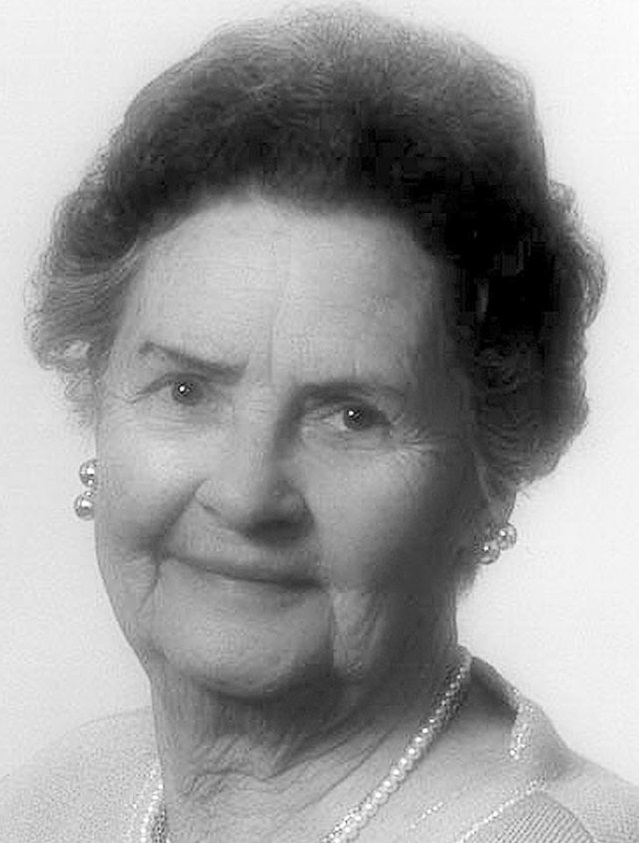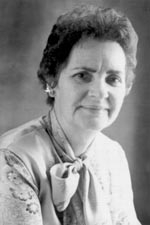Profile

Janet Taylor Spence
Birth:
1923
Death:
2015
Training Location(s):
PhD, University of Iowa (1949)
MA, University of Iowa (1949)
BA, Oberlin College (1945)
Primary Affiliation(s):
University of Texas at Austin (1964-1997)
Northwestern University (1949-1960)
Career Focus:
Anxiety; task performance; gender differentiation; motivation; masculinity and femininity; attitudes toward women; personality.
Biography
Janet Allison Taylor was born in Toledo Ohio in 1923. She noted that she never experienced sex discrimination in her youth, and was therefore unaware of its existence. She was also never formally introduced to the ideas of gender equality and feminism, though her well-educated and independent mother set an excellent example for her. Taylor attended an all-girls school as a teen and when she was ready to apply for university she claims she was tired of being surrounded only by women. She applied to Oberlin College on the recommendation of one of her teachers. Not fully understanding what psychology was, Taylor was determined to major in it at Oberlin.
Unable to take introductory psychology in her freshman year due to college policy, Taylor declared a double major in psychology and political science. Once she began taking psychology she was still unsure exactly what it was. She was challenged by the subject matter, stuck with it and graduated from Oberlin in 1945. Upon graduating, Taylor learned that her bachelor’s degree wouldn’t take her very far in the world of psychology so she decided to go to graduate school. When seeking guidance from a faculty member at Oberlin, Taylor was told that she might enjoy Yale and so she took the advice and enrolled. Even as far into her psychology career as graduate school Taylor was still uncertain as to what psychology actually was and what opportunities it might offer. She felt that doing clinical work was the only way for her to succeed.
While at Yale, Taylor learned a great deal from Catharine Cox Miles, a professor of clinical psychology. As a graduate student at the end of the war, Taylor was surrounded by other female students and never got the impression that women were uncommon in academia. Taylor left Yale in order to complete a one year internship in clinical psychology. This internship left her feeling unfulfilled, so when a colleague suggested she work with Kenneth Spence at the University of Iowa she jumped at the chance to try experimental research. Taylor received her PhD from the University of Iowa in 1949. Immediately following this, she was quickly hired as the first female faculty member at Northwestern University.
At Northwestern, Taylor kept in touch with Kenneth Spence and they collaborated on several research projects together. They studied anxiety and personality using the technique of eyelid conditioning. Their relationship evolved over the years and in the late 1950s they decided to marry. Janet Taylor Spence returned to Iowa after the wedding and started looking for a job. Due to anti-nepotism rules at the university, she was not allowed to work at the University of Iowa and instead found a position with the Veterans Affairs Hospital in Iowa City. Her research focus shifted at this point out of necessity. She no longer had easy access to anxious college students, but she did have access to schizophrenic patients. Spence thus began looking into the motivational and task performance of people with schizophrenia.
In 1964 Kenneth Spence was recruited by the University of Texas. Janet Taylor Spence decided to come as well, as they had several colleagues and friends that had already taken job opportunities there. Again, anti-nepotism rules meant that she was not permitted to work in the Psychology Department, however she did find a job with the Austin State School for the Retarded. Eventually, in an effort to keep Kenneth Spence in his position, the University of Texas at Austin offered Janet Taylor Spence a job in the educational psychology department. Here, her research shifted again to focus on children and child development, an area in which she had little prior experience. Not long after this, Kenneth died quite unexpectedly. Although she was devastated by the loss of her husband, Spence was able to move to the Psychology Department where she also became chair. One of the things she prioritized while in this position was increasing the recruitment of women to the department.
By the mid 1960s, Spence began to realize that her research area was becoming less and less relevant to the field of psychology. Thinking that she had exhausted her research program, she began looking for a new focus. It was purely by chance that she read an article about the competencies of men and realized that all of the stimuli and participants were male. The study offered no explanation for this, and since the women’s movement was strong at the time, she thought it would be interesting to try a study about women. This chance encounter with ‘gender psychology’ grew into a real passion, and from that interest she developed the Attitudes Toward Women Scale with her colleague Robert Helmreich. Determined to have the rest of the field recognize the legitimacy of this work, Spence made a point of writing in a neutral voice and publishing in reputable journals that would have reach both male and female audiences.
Her efforts to improve the visibility of gender psychology in the field paid off. Spence recognized that the status of women has improved tremendously over the years, though she also understood that the work was not over. She retired to Cape Cod near the familial home but never really left psychology. Her message for young psychologists: Do what you think is enjoyable and important, even if you are not getting the recognition you think you deserve for it. Sex discrimination is subtle in today’s society and we must not lose sight of the fact that our work is not over. Janet Taylor Spence died after a brief illness on March 16, 2015 leaving her work, her words, and the battle to the next generation.
by Meghan George (2012)
Updated (2015)
To cite this article, see Credits
Selected Works
By Janet Taylor Spence
Babladelis, G., Deaux, K., Helmreich, R. L., & Spence, J. T. (1983). Sex-related attitudes and personal characteristics in the United States. International Journal of Psychology, 18(1-2), 111-123.
Spence, J. T. (1964). Verbal discrimination performance under different verbal reinforcement combination. Journal of Experimental Psychology, 67(2), 195-197.
Spence, J. T. (1979). Traits, roles, and the concept of androgyny. In J. E. Gullahorn (Ed.), Psychology and women: In transition (pp. 167–187). New York: Wiley.
Spence, J. T., & Buckner, C. E. (2000). Instrumental and expressive traits, trait stereotypes, and sexist attitudes: What do they signify? Psychology of Women Quarterly, 24, 42–62.
Spence, J. T., & Helmreich, R. (1972). Who likes competent women? Competence, sex-role congruence of interest, and subjects’ attitudes toward women as determinants of interpersonal attraction. Journal of Applied Social Psychology, 2, 197–213.
Spence, J. T., & Helmreich, R. L. (1978). Masculinity and femininity: Their psychological dimensions, correlates and antecedents. Austin: University of Texas Press.
Spence, J. T., Helmreich, R., & Stapp, J. (1975). Ratings of self and peers on sex-role attributes and their relations to self-esteem and conceptions of masculinity and femininity. Journal of Personality and Social Psychology, 32, 29–39.
Spence, K. W., & Spence, J. T. (1964). Relation of eyelid conditioning to manifest anxiety, extraversion, and rigidity. The Journal of Abnormal and Social Psychology, 68(2), 144-149.
Taylor, J. A. (1953). A personality scale of manifest anxiety. Journal of Abnormal and Social Psychology, 48, 285–290.
About Janet Taylor Spence
Gold medal award for life achievement in the science of psychology: Janet Taylor Spence. (2004). American Psychologist, 59(5), 361-363.
Swann, W. B., Langlois, J. H., & Gilbert, L. A. (Eds.) (1999). Sexism and stereotypes in modern society: The gender science of Janet Taylor Spence. Washington, DC: American Psychological Association,.
Photo Gallery




Janet Taylor Spence
Birth:
1923
Death:
2015
Training Location(s):
PhD, University of Iowa (1949)
MA, University of Iowa (1949)
BA, Oberlin College (1945)
Primary Affiliation(s):
University of Texas at Austin (1964-1997)
Northwestern University (1949-1960)
Career Focus:
Anxiety; task performance; gender differentiation; motivation; masculinity and femininity; attitudes toward women; personality.
Biography
Janet Allison Taylor was born in Toledo Ohio in 1923. She noted that she never experienced sex discrimination in her youth, and was therefore unaware of its existence. She was also never formally introduced to the ideas of gender equality and feminism, though her well-educated and independent mother set an excellent example for her. Taylor attended an all-girls school as a teen and when she was ready to apply for university she claims she was tired of being surrounded only by women. She applied to Oberlin College on the recommendation of one of her teachers. Not fully understanding what psychology was, Taylor was determined to major in it at Oberlin.
Unable to take introductory psychology in her freshman year due to college policy, Taylor declared a double major in psychology and political science. Once she began taking psychology she was still unsure exactly what it was. She was challenged by the subject matter, stuck with it and graduated from Oberlin in 1945. Upon graduating, Taylor learned that her bachelor’s degree wouldn’t take her very far in the world of psychology so she decided to go to graduate school. When seeking guidance from a faculty member at Oberlin, Taylor was told that she might enjoy Yale and so she took the advice and enrolled. Even as far into her psychology career as graduate school Taylor was still uncertain as to what psychology actually was and what opportunities it might offer. She felt that doing clinical work was the only way for her to succeed.
While at Yale, Taylor learned a great deal from Catharine Cox Miles, a professor of clinical psychology. As a graduate student at the end of the war, Taylor was surrounded by other female students and never got the impression that women were uncommon in academia. Taylor left Yale in order to complete a one year internship in clinical psychology. This internship left her feeling unfulfilled, so when a colleague suggested she work with Kenneth Spence at the University of Iowa she jumped at the chance to try experimental research. Taylor received her PhD from the University of Iowa in 1949. Immediately following this, she was quickly hired as the first female faculty member at Northwestern University.
At Northwestern, Taylor kept in touch with Kenneth Spence and they collaborated on several research projects together. They studied anxiety and personality using the technique of eyelid conditioning. Their relationship evolved over the years and in the late 1950s they decided to marry. Janet Taylor Spence returned to Iowa after the wedding and started looking for a job. Due to anti-nepotism rules at the university, she was not allowed to work at the University of Iowa and instead found a position with the Veterans Affairs Hospital in Iowa City. Her research focus shifted at this point out of necessity. She no longer had easy access to anxious college students, but she did have access to schizophrenic patients. Spence thus began looking into the motivational and task performance of people with schizophrenia.
In 1964 Kenneth Spence was recruited by the University of Texas. Janet Taylor Spence decided to come as well, as they had several colleagues and friends that had already taken job opportunities there. Again, anti-nepotism rules meant that she was not permitted to work in the Psychology Department, however she did find a job with the Austin State School for the Retarded. Eventually, in an effort to keep Kenneth Spence in his position, the University of Texas at Austin offered Janet Taylor Spence a job in the educational psychology department. Here, her research shifted again to focus on children and child development, an area in which she had little prior experience. Not long after this, Kenneth died quite unexpectedly. Although she was devastated by the loss of her husband, Spence was able to move to the Psychology Department where she also became chair. One of the things she prioritized while in this position was increasing the recruitment of women to the department.
By the mid 1960s, Spence began to realize that her research area was becoming less and less relevant to the field of psychology. Thinking that she had exhausted her research program, she began looking for a new focus. It was purely by chance that she read an article about the competencies of men and realized that all of the stimuli and participants were male. The study offered no explanation for this, and since the women’s movement was strong at the time, she thought it would be interesting to try a study about women. This chance encounter with ‘gender psychology’ grew into a real passion, and from that interest she developed the Attitudes Toward Women Scale with her colleague Robert Helmreich. Determined to have the rest of the field recognize the legitimacy of this work, Spence made a point of writing in a neutral voice and publishing in reputable journals that would have reach both male and female audiences.
Her efforts to improve the visibility of gender psychology in the field paid off. Spence recognized that the status of women has improved tremendously over the years, though she also understood that the work was not over. She retired to Cape Cod near the familial home but never really left psychology. Her message for young psychologists: Do what you think is enjoyable and important, even if you are not getting the recognition you think you deserve for it. Sex discrimination is subtle in today’s society and we must not lose sight of the fact that our work is not over. Janet Taylor Spence died after a brief illness on March 16, 2015 leaving her work, her words, and the battle to the next generation.
by Meghan George (2012)
Updated (2015)
To cite this article, see Credits
Selected Works
By Janet Taylor Spence
Babladelis, G., Deaux, K., Helmreich, R. L., & Spence, J. T. (1983). Sex-related attitudes and personal characteristics in the United States. International Journal of Psychology, 18(1-2), 111-123.
Spence, J. T. (1964). Verbal discrimination performance under different verbal reinforcement combination. Journal of Experimental Psychology, 67(2), 195-197.
Spence, J. T. (1979). Traits, roles, and the concept of androgyny. In J. E. Gullahorn (Ed.), Psychology and women: In transition (pp. 167–187). New York: Wiley.
Spence, J. T., & Buckner, C. E. (2000). Instrumental and expressive traits, trait stereotypes, and sexist attitudes: What do they signify? Psychology of Women Quarterly, 24, 42–62.
Spence, J. T., & Helmreich, R. (1972). Who likes competent women? Competence, sex-role congruence of interest, and subjects’ attitudes toward women as determinants of interpersonal attraction. Journal of Applied Social Psychology, 2, 197–213.
Spence, J. T., & Helmreich, R. L. (1978). Masculinity and femininity: Their psychological dimensions, correlates and antecedents. Austin: University of Texas Press.
Spence, J. T., Helmreich, R., & Stapp, J. (1975). Ratings of self and peers on sex-role attributes and their relations to self-esteem and conceptions of masculinity and femininity. Journal of Personality and Social Psychology, 32, 29–39.
Spence, K. W., & Spence, J. T. (1964). Relation of eyelid conditioning to manifest anxiety, extraversion, and rigidity. The Journal of Abnormal and Social Psychology, 68(2), 144-149.
Taylor, J. A. (1953). A personality scale of manifest anxiety. Journal of Abnormal and Social Psychology, 48, 285–290.
About Janet Taylor Spence
Gold medal award for life achievement in the science of psychology: Janet Taylor Spence. (2004). American Psychologist, 59(5), 361-363.
Swann, W. B., Langlois, J. H., & Gilbert, L. A. (Eds.) (1999). Sexism and stereotypes in modern society: The gender science of Janet Taylor Spence. Washington, DC: American Psychological Association,.



